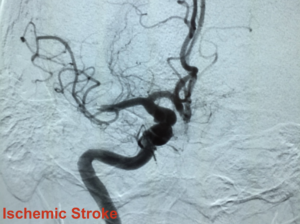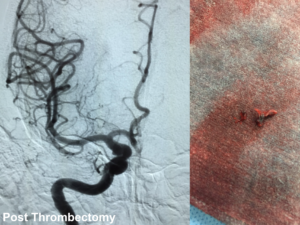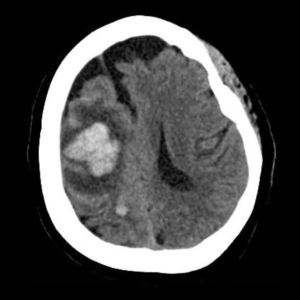Ischemic Stroke
Stroke, also commonly called a “brain attack,” is the leading cause of long-term disability in the United States and the 5th leading cause of death. There are about 6.5 million stroke survivors and counting today.
A stroke is an injury to the brain related to a disruption in blood flow.
Types of Stroke, or “Brain Attacks”
There are two main types of stroke, ischemic and hemorrhagic. Ischemic stroke occurs when blood flow is cut off from a part of the brain, most commonly from a clot or small plaque. Hemorrhagic stroke occurs when blood spills out of an artery and is not able to reach its destination, ultimately causing a collection of blood in or around the brain.
Treating Stoke
The latest research and technology within the fields of endovascular neurosurgery, interventional neuroradiology and vascular/stroke neurology have transformed the treatment of ischemic stroke. Ischemic stroke is quickly becoming a surgical disease. Meaning, interventional and endovascular treatment has rapidly become the primary way provide to life-saving therapy and offer the highest quality of life in treating ischemic stroke.
Endovascular stroke therapy, or “mechanical thrombectomy,” consists of retrieving the clot by operating from within the inside of arteries of the body and is comprised of two primary techniques: direct aspiration or utilization of a stent retriever. Both of these techniques start from a small incision in the groin, wrist, or neck to access your arteries. An experienced surgeon or interventionist determines the location of access based on the clot location and the patient’s individual blood vessel architecture. Direct aspiration thrombectomy consists of telescoping small catheters within the blood vessels to the point of the clot, the clot is then suctioned into the catheter and removed.
Hemorrhagic Stroke
Hemorrhagic stroke occurs when blood pools outside of the vessels and is unable to be delivered to its intended destination. Hemorrhagic stroke injures both the healthy brain that does not receive the blood it needs and the brain tissue where blood collects outside of the vessel.
The three most common causes of hemorrhagic stroke are related to (1) intracerebral hemorrhage, (2) brain aneurysm rupture, and (3) brain AVM and fistula rupture.
Intracerebral hemorrhage is bleeding within the brain substance, most often from chronic hypertension or a hemorrhagic conversion of an ischemic stroke (where a clot has blocked blood flow and in the days following a bleed develops in the injured blood vessels).
Hemorrhagic stroke can be treated by an experienced cerebrovascular neurosurgeon or neurointerventionalist. Hemorrhagic stroke can be devastating to patients and should be treated at a medical center that is dedicated to neuroscience. Each hemorrhagic stroke is unique, and Dr. Coon is available to discuss prompt treatment options should you or someone you know experience a hemorrhagic stroke.
Start the treatment that will be best for you
To make an appointment call 520-881-8400.




